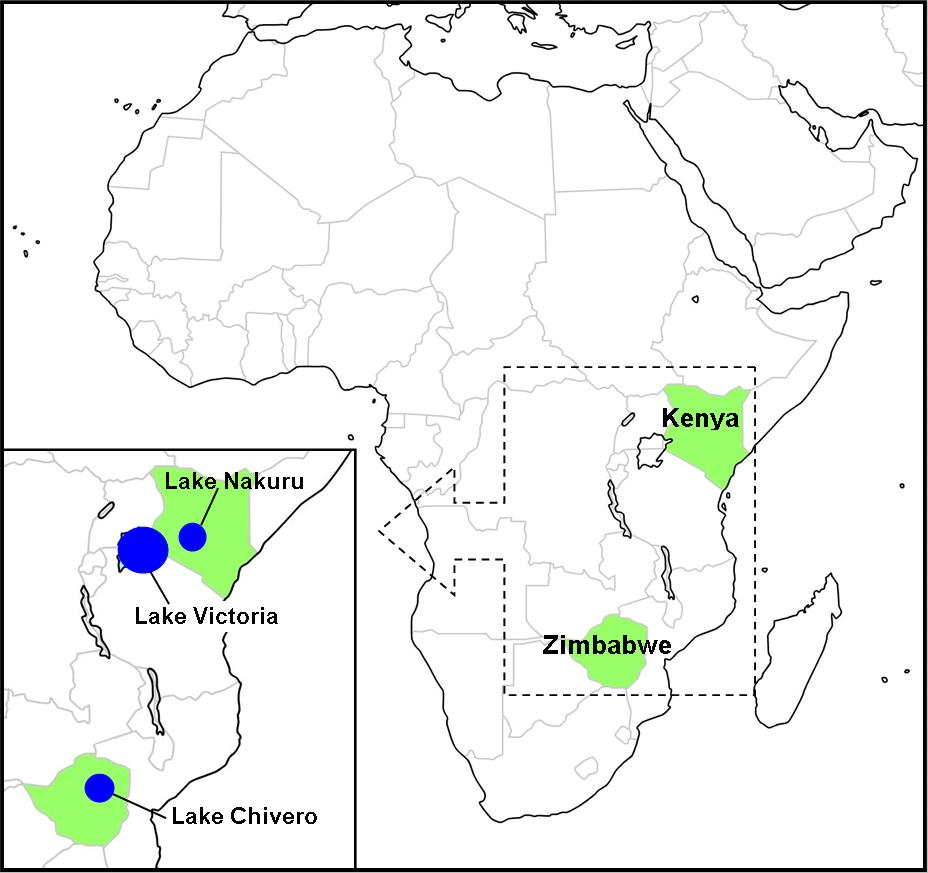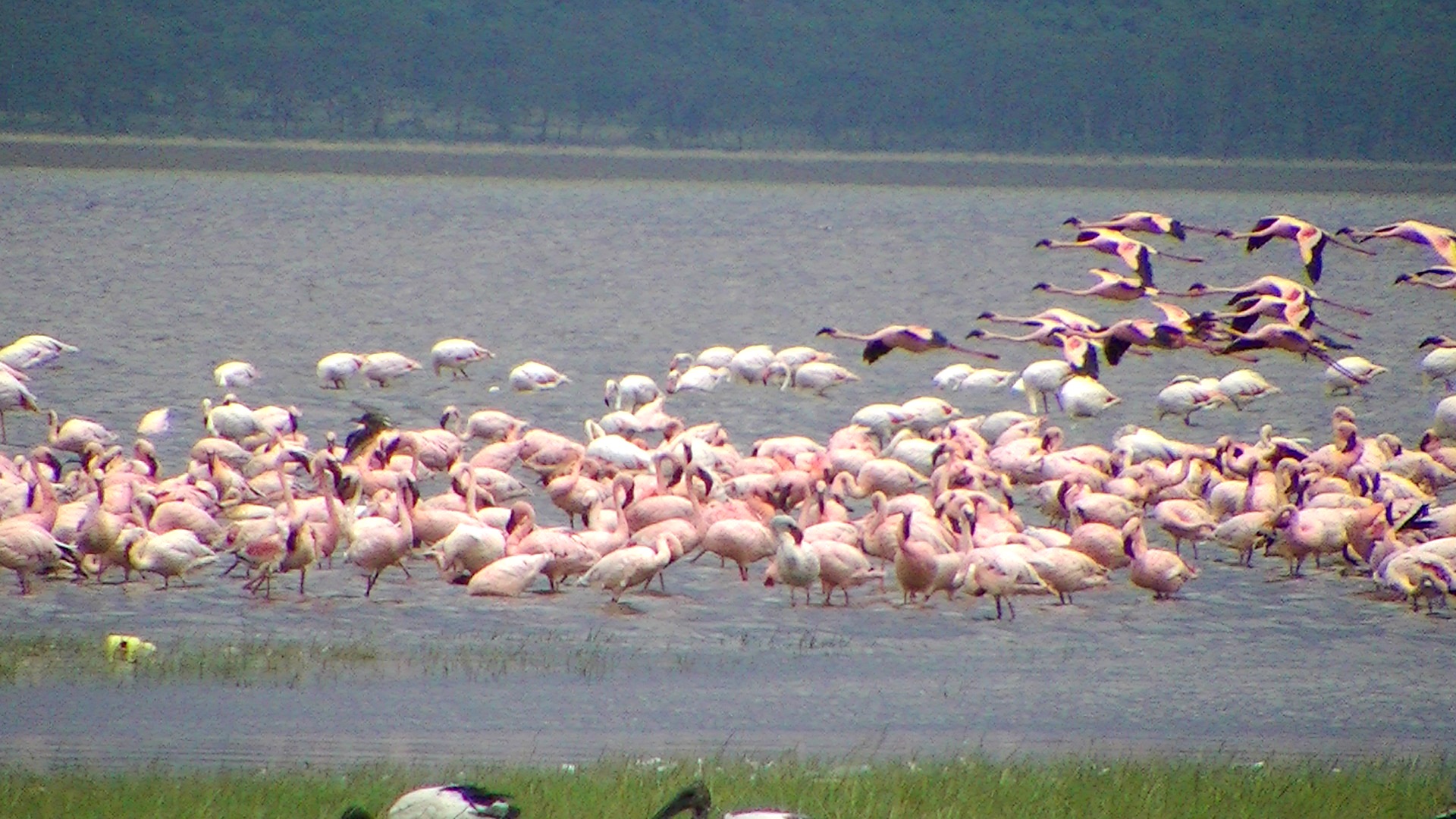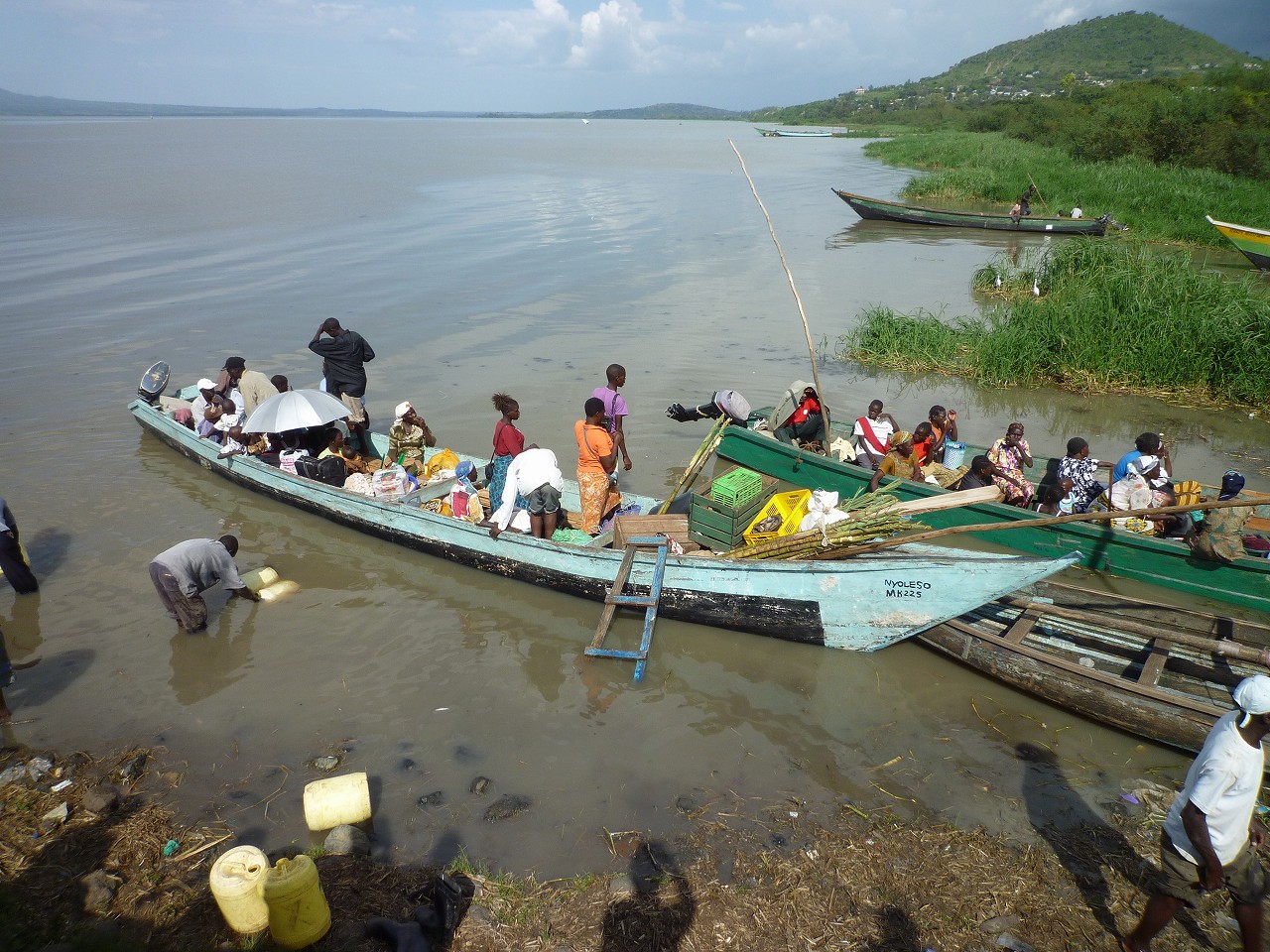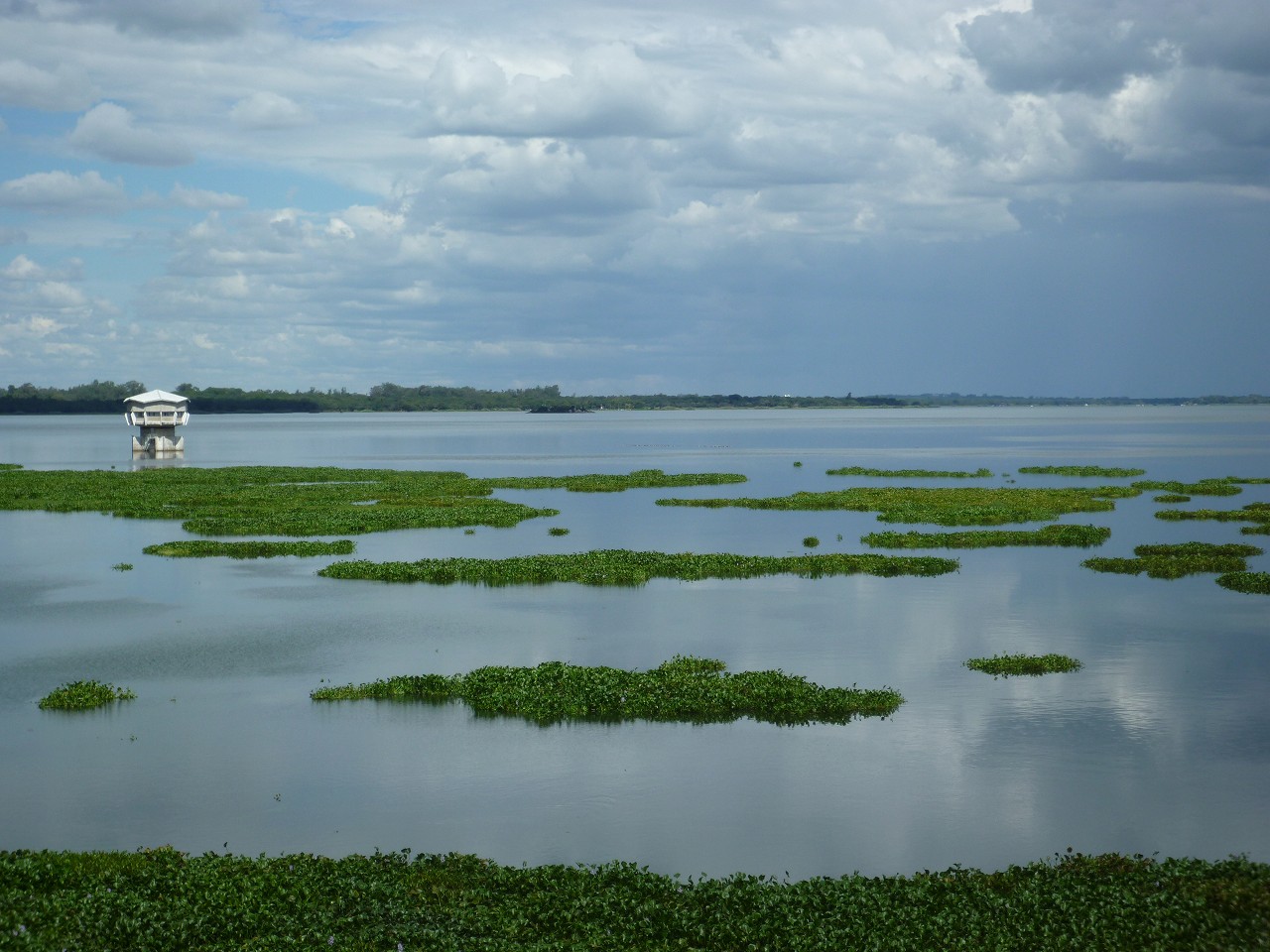General Information
 Integrated Basin Lake Management (ILBM) and its Platform Process are being promoted around the world. International Lake Environment Committee Foundation (ILEC), in cooperation with Research Center for Sustainability and Environment, Shiga University (RCSE-SU), conducted a three-year project (FY 2009-2011), known as “African Lake Basin Management with Sanitation Challenges (AFSAN),” commissioned by the Ministry of the Environment, Japan, to introduce the ILBM approach to improve water and sanitation conditions in three lake basins in East Africa: Lake Nakuru, Nyanza Gulf-Lake Victoria (Kenya), and Lake Chivero (Zimbabwe).
Integrated Basin Lake Management (ILBM) and its Platform Process are being promoted around the world. International Lake Environment Committee Foundation (ILEC), in cooperation with Research Center for Sustainability and Environment, Shiga University (RCSE-SU), conducted a three-year project (FY 2009-2011), known as “African Lake Basin Management with Sanitation Challenges (AFSAN),” commissioned by the Ministry of the Environment, Japan, to introduce the ILBM approach to improve water and sanitation conditions in three lake basins in East Africa: Lake Nakuru, Nyanza Gulf-Lake Victoria (Kenya), and Lake Chivero (Zimbabwe).
Lake Nakuru (Kenya)
 Lake Nakuru, a closed and shallow alkaline lake, famous for flamingos residing in its basin, is facing a number of issues and challenges. In the last three years, ILEC has been working together with local organizations to promote the ILBM Platform Process to confront these challenges. After some consultative visits and field visits for the AFSAN project in collaboration with local partners, the Lake Nakuru ILBM Platform Process was formally launched in December 2011. In January 2012, the ILBM steering committee was formalized; Chairman (Kenya Wildlife Service) and the Secretariat (Municipal Council of Nakuru) were also appointed and established, respectively. The committee prepared the initial PowerPoint version of the Lake Nakuru Lake Brief using the ILEC guidelines. Three participatory stakeholder meetings were organized to analyze the Six ILBM Governance Pillars for the Lake Nakuru basin to initiate the Nakuru ILBM Platform Process. Currently, eleven key institutions from governments, NGOs, and CBOs (Community-Based Organizations) are joining together to improve the basin governance through the ILBM Platform Process. The participated members committed to bringing about the results and agreed to meeting and reporting progress bi-annually. They proposed both short-term and long-term act ions to meet the chal lenges: These challenges include 1) siltation of the lake and river sedimentation, 2) poor enforcement of environmental laws, 3) poor solid waste management and urban pollution, 4) sewer blockages/spillage and discharge of untreated factory effluent, and 5) poor sanitation in low income areas.
Lake Nakuru, a closed and shallow alkaline lake, famous for flamingos residing in its basin, is facing a number of issues and challenges. In the last three years, ILEC has been working together with local organizations to promote the ILBM Platform Process to confront these challenges. After some consultative visits and field visits for the AFSAN project in collaboration with local partners, the Lake Nakuru ILBM Platform Process was formally launched in December 2011. In January 2012, the ILBM steering committee was formalized; Chairman (Kenya Wildlife Service) and the Secretariat (Municipal Council of Nakuru) were also appointed and established, respectively. The committee prepared the initial PowerPoint version of the Lake Nakuru Lake Brief using the ILEC guidelines. Three participatory stakeholder meetings were organized to analyze the Six ILBM Governance Pillars for the Lake Nakuru basin to initiate the Nakuru ILBM Platform Process. Currently, eleven key institutions from governments, NGOs, and CBOs (Community-Based Organizations) are joining together to improve the basin governance through the ILBM Platform Process. The participated members committed to bringing about the results and agreed to meeting and reporting progress bi-annually. They proposed both short-term and long-term act ions to meet the chal lenges: These challenges include 1) siltation of the lake and river sedimentation, 2) poor enforcement of environmental laws, 3) poor solid waste management and urban pollution, 4) sewer blockages/spillage and discharge of untreated factory effluent, and 5) poor sanitation in low income areas.
Nyanza Gulf - Lake Victoria (Kenya)
Nyanza Gulf of Lake Victoria is one of the most polluted areas in the Lake Victoria basin because it is a shallow inlet, connected to the main lake only through the narrow Rusinga Channel (three miles wide). After a field visit and a workshop in Kisumu during the AFSAN project in February 2010, the ILBM Platform Process was initiated with the support of OSIENALA, a local focal point in Nyanza Gulf of Lake Victoria. OSIENALA has brought together the major stakeholders around the Nyanza Gulf, including schools and colleges, relevant parastatals such as KEFRI, KEMFRI, KARI, KFS, local authorities, Lake Basin Development Authority (LBDA), Lake Victoria Environment Management Program (LVEMP), Lake Victoria Basin Commission, relevant ministries and CSOs. This ILBM team is currently working on a Lake Brief for Nyanza Gulf and implementing the following activities:
1) Community Conservation Projects
 LVEP received funding from the World Bank to implement environmental conservation activities. OSIENALA is supporting community conservation projects in the southern shores of Lake Victoria to reduce pollution loads into the lake. The activities include tree planting, riverbank protection and capacity building for soil erosion control by farmers.
LVEP received funding from the World Bank to implement environmental conservation activities. OSIENALA is supporting community conservation projects in the southern shores of Lake Victoria to reduce pollution loads into the lake. The activities include tree planting, riverbank protection and capacity building for soil erosion control by farmers.
2) Integrated Agricultural Practices
In a bid to conserve the fishery resources, OSIENALA in partnership with Oceantec Ltd. (USA) has formed the First Source Kenya to implement this project. The objective is to improve livelihoods in Homa Bay County. The project has four main components, namely, horticulture, fish farming, dairy farming and safe drinking provision.
3) HOPE-LVB Project
HOPE-LVB is a project dealing with human and environmental health along the Lake Victoria basin. In this project, several livelihood activities are implemented to help the community members earn a living while protecting the environment.
Lake Chivero (Zimbabwe)
 Lake Chivero is the source of drinking water for the cities of Harare and Chitungwiza. The lake is hyper-eutrophic with a high level of nitrogen, phosphorous, and suspended and dissolved solids. As another critical issue, sediments continue to reduce the lake’s storage capacity. The reason for this gloomy scenario includes inadequate treatment of sewage and waste water discharged from the cities Harare, Chitungwiza and Ruwa, non-point source pollution, inadequate management of solid waste, and the destruct ion of natural purification systems. Possible actions to improve water quality of Lake Chievero were identified in the five year process of establishing the ILBM Platform Process through the collaboration between ILEC and local stakeholder groups. In September 2011, ILEC undertook a field research in Zimbabwe, and the ILBM Platform Process was established in December 2011. In March 2012, an interim committee coordinated by the University of Zimbabwe was set up and the concept paper was formulated for improving governance of Lake Chivero. In July 2012, Green Bridge –an eco-technological in-situ horizontal filtration system – was experimentally installed on the Manyame River by experts from Shrishti Eco-Research Institute (India) and the Zimbabwean ILBM team. As it may take time to fully implement the ILBM Platform Process there, ILEC continues to explore various possibilities to support and encourage local stakeholders to participate in and contribute to the process.
Lake Chivero is the source of drinking water for the cities of Harare and Chitungwiza. The lake is hyper-eutrophic with a high level of nitrogen, phosphorous, and suspended and dissolved solids. As another critical issue, sediments continue to reduce the lake’s storage capacity. The reason for this gloomy scenario includes inadequate treatment of sewage and waste water discharged from the cities Harare, Chitungwiza and Ruwa, non-point source pollution, inadequate management of solid waste, and the destruct ion of natural purification systems. Possible actions to improve water quality of Lake Chievero were identified in the five year process of establishing the ILBM Platform Process through the collaboration between ILEC and local stakeholder groups. In September 2011, ILEC undertook a field research in Zimbabwe, and the ILBM Platform Process was established in December 2011. In March 2012, an interim committee coordinated by the University of Zimbabwe was set up and the concept paper was formulated for improving governance of Lake Chivero. In July 2012, Green Bridge –an eco-technological in-situ horizontal filtration system – was experimentally installed on the Manyame River by experts from Shrishti Eco-Research Institute (India) and the Zimbabwean ILBM team. As it may take time to fully implement the ILBM Platform Process there, ILEC continues to explore various possibilities to support and encourage local stakeholders to participate in and contribute to the process.
The International Symposium for Integrated Lake Basin Management (ILBM) in Africa (June 1, 2013)
In connection with the 5th Tokyo International Conference on African Development (TICAD V), ILEC organized “The International Symposium for Integrated Lake Basin Management (ILBM) in Africa: Accelerating the TICAD Process through Sound Management of Lakes and Reservoirs” in Yokohama, Japan, on June 1.
At this symposium funded by Japan Fund for Global Environment, Dr. Madhav Chitale from India, Stockholm Water Prize Laureate for 1993, gave a keynote speech on how sustainable management of lakes and reservoirs could be pursued, reporting Indian cases, which precede African ones. The keynote speech was followed by a panel discussion, featuring representatives from Lake Victoria’s Nyanza Gulf (Kenya), Lake Nakuru (Kenya), and Lake Chivero (Zimbabwe). With a UNEP official participating in the discussion, the panelists actively exchanged their insights in regard to challenges each lake was facing and what should be done to enhance sustainable management of lakes and reservoirs.
The African Lake Basin Management with Sanitation Challenges - AFSAN project (FY 2009-2011)
International Lake Environment Committee Foundation (ILEC), in cooperation with Research Center for Sustainability and Environment, Shiga University (RCSE-SU), undertook a project entitled “African Lake Basin Management with Sanitation Challenges (AFSAN)” from FY 2009 to 2011, with financial support from the Ministry of the Environment, Japan. In the course of implementing the project, Lake Victoria, Lake Nakuru, and Lake Chivero have been able to complete the initial phase of the ILBM Platform Process.
Partners
OSIENALA (Lake Victoria), Kenya
FlamingoNet (Lake Nakuru), Kenya
University of Zimbabwe (Lake Chivero), Zimbabwe
Ministry of the Environment, Japan
Research Center for Sustainability and Environment, Shiga University, Japan